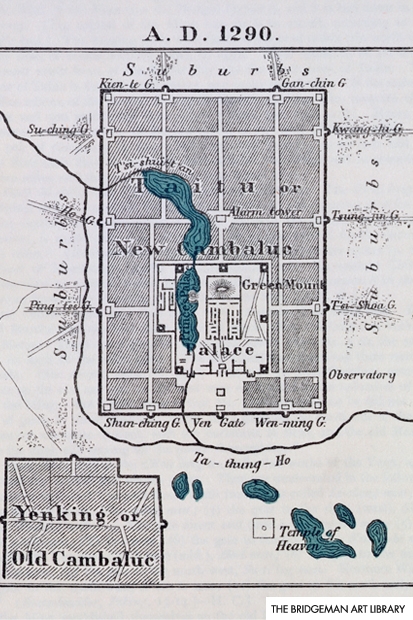As a boy I spent quite a lot of my free time trying to fake up ancient-looking documents. This hopeless enterprise involved things like staining paper with tea or vinegar, together with plenty of burning, and creasing, and copying of random texts with a scratchy old inkwell pen. Typical silly small boy stuff. Reading this book on a collection of maps supposedly derived from Marco Polo suddenly brought it all back — especially the silliness.
Now Marco Polo is a figure wreathed in some mystery. He was known from the 14th century as the first European to report in detail and from personal experience on that fabulous world called ‘Cathay’, the land of the fabled Kublai Khan. But many have asked if what he reported was true. Did Marco Polo really visit China? Did he really write the book we know as The Travels of Marco Polo? Did he even exist?
There are certainly questions to be answered. The Travels was not written like a conventional book, but rather dictated, possibly as a series of disjointed notes, to some kind of amanuensis who may have added his own commentary. It contains a collage of materials, some of which feel like first-person narratives, and some of which don’t. As a manuscript book the Travels also exists in more than 100 different versions, so there is no single reliable source text. These uncertainties have given rise to the ‘mystery’ of Marco Polo.
But there is really no mystery at all. Polo is a fairly well-attested historical figure who was born in Venice in 1254 and died there a prosperous merchant in 1324, and who almost certainly travelled for many years in Central Asia. Returning to Venice he brought back the most vivid and authentic-sounding account of the East that Europe had hitherto known.








Comments
Join the debate for just £1 a month
Be part of the conversation with other Spectator readers by getting your first three months for £3.
UNLOCK ACCESS Just £1 a monthAlready a subscriber? Log in